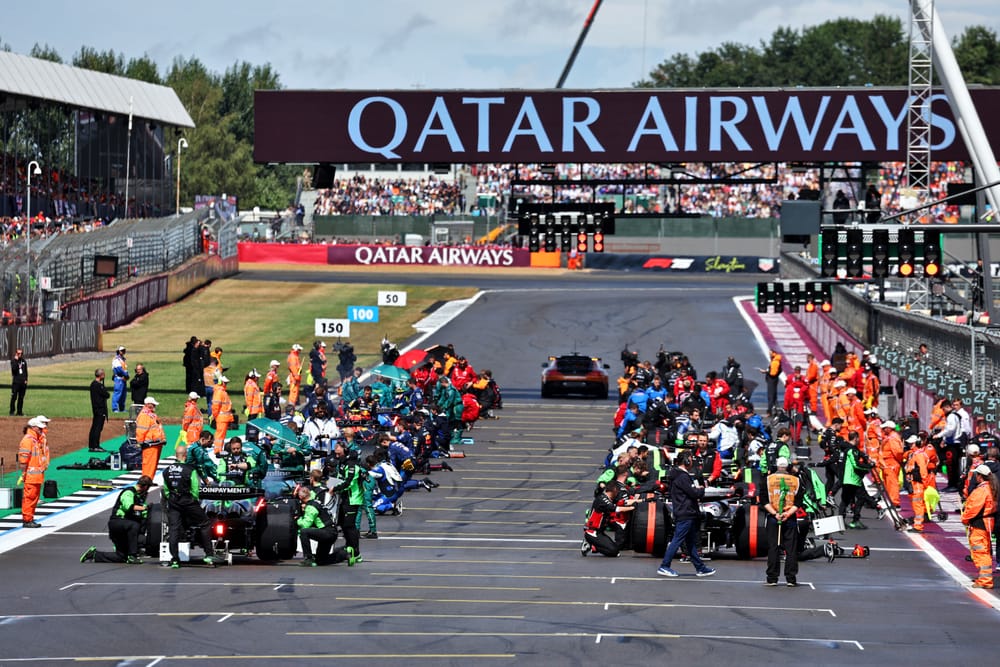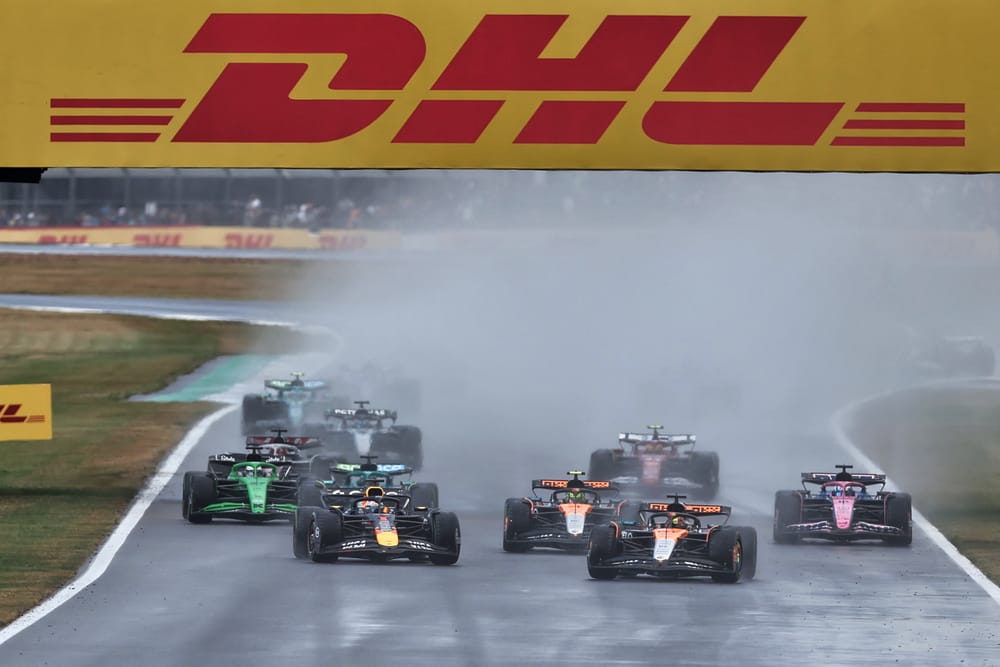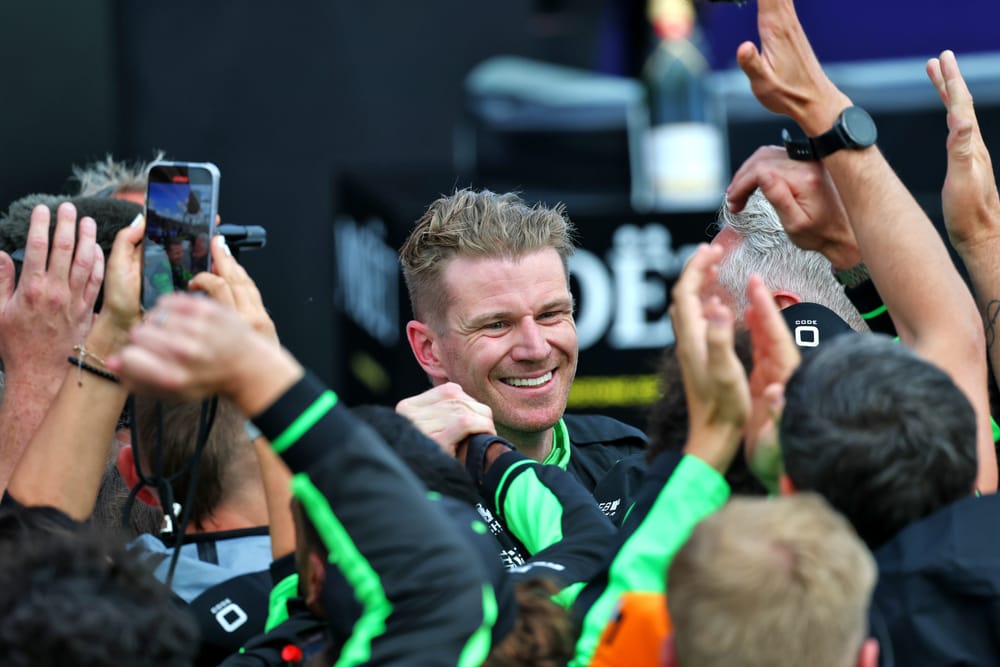The 2025 Formula 1 season reached its mid-point with a brilliantly chaotic British Grand Prix that featured a controversial race-deciding penalty and a highly popular first-time podium finisher.
Here’s everything we learned on the ground at Silverstone…
A McLaren driver role reversal
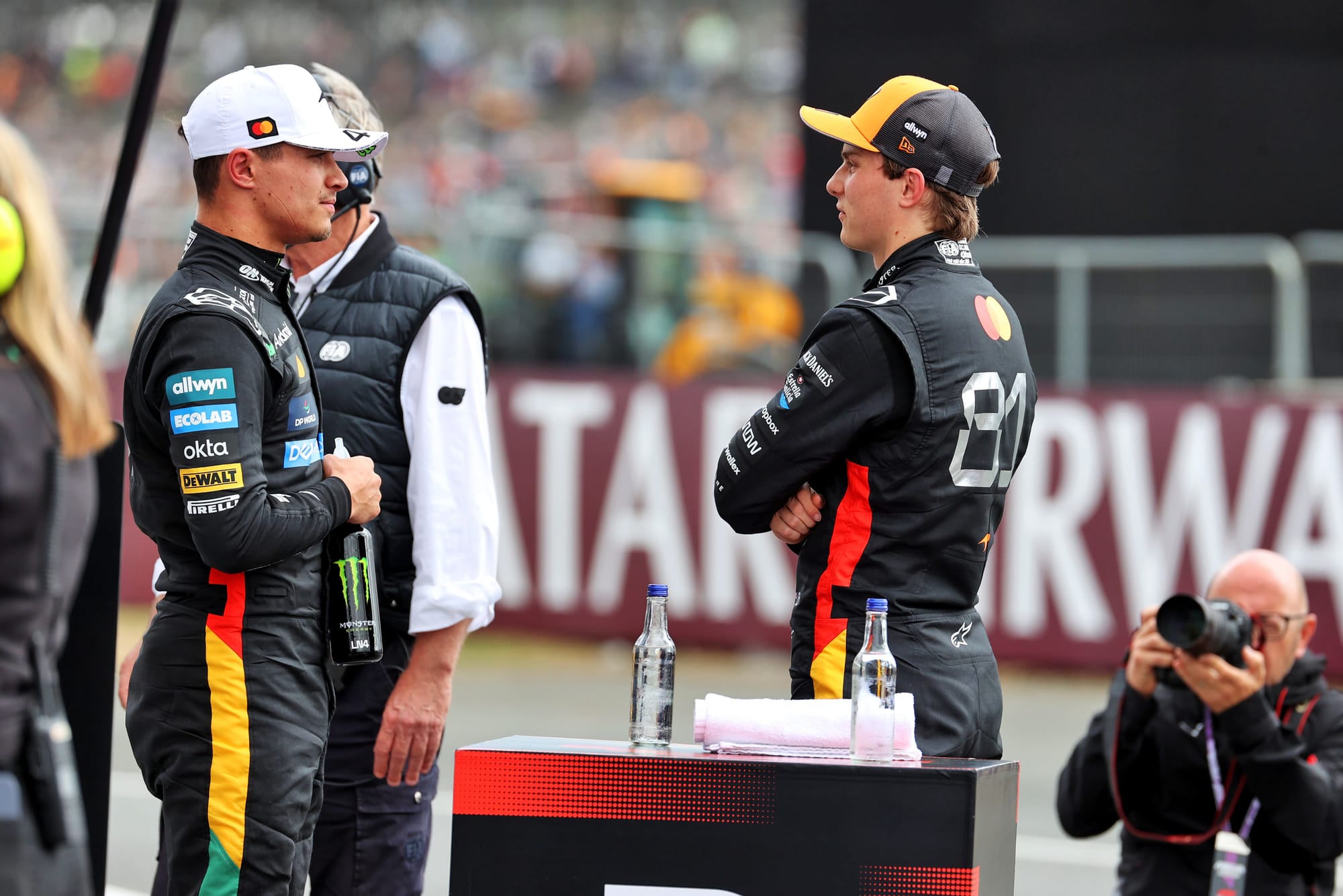
Lando Norris has won back-to-back races for the first time this year. And while it’s not the first time Norris has taken points out of Oscar Piastri for two races in a row, this is a bit of a momentum-shifter with the two drivers having swapped their usual 2025 roles.
For the first time, Norris can say he has won on a bad day. And while that's not to give him too much credit, because Piastri was the faster driver overall, sometimes you need a bit of luck to go your way and put yourself in a position to pick up the pieces.
This was typical of this year’s intra-McLaren title fight, as tiny margins made the difference. Neither driver maximised Q3, allowing Max Verstappen to steal pole, but it was Piastri who made fewer mistakes on Saturday.
But the aforementioned role reversal is partly down to the fact that, in an unusual way, Piastri made a costly mistake. He and McLaren don’t see it as a mistake like his Australia off, because they feel this was a "harsh penalty."
But regardless of whether that's true, for the first time in 2025 Piastri didn’t win a race he should have. And he was hurting more than his usual ice-cool self.
This wasn’t the same as Norris berating himself, as it was clearly a grievance at a decision Piastri felt was wrong, but as he said it “hurts” - and he wants to use it as fuel to bounce back. Which is more like the tone we’re used to hearing from Norris on a Sunday evening.
The Hulkenberg podium narrative is over
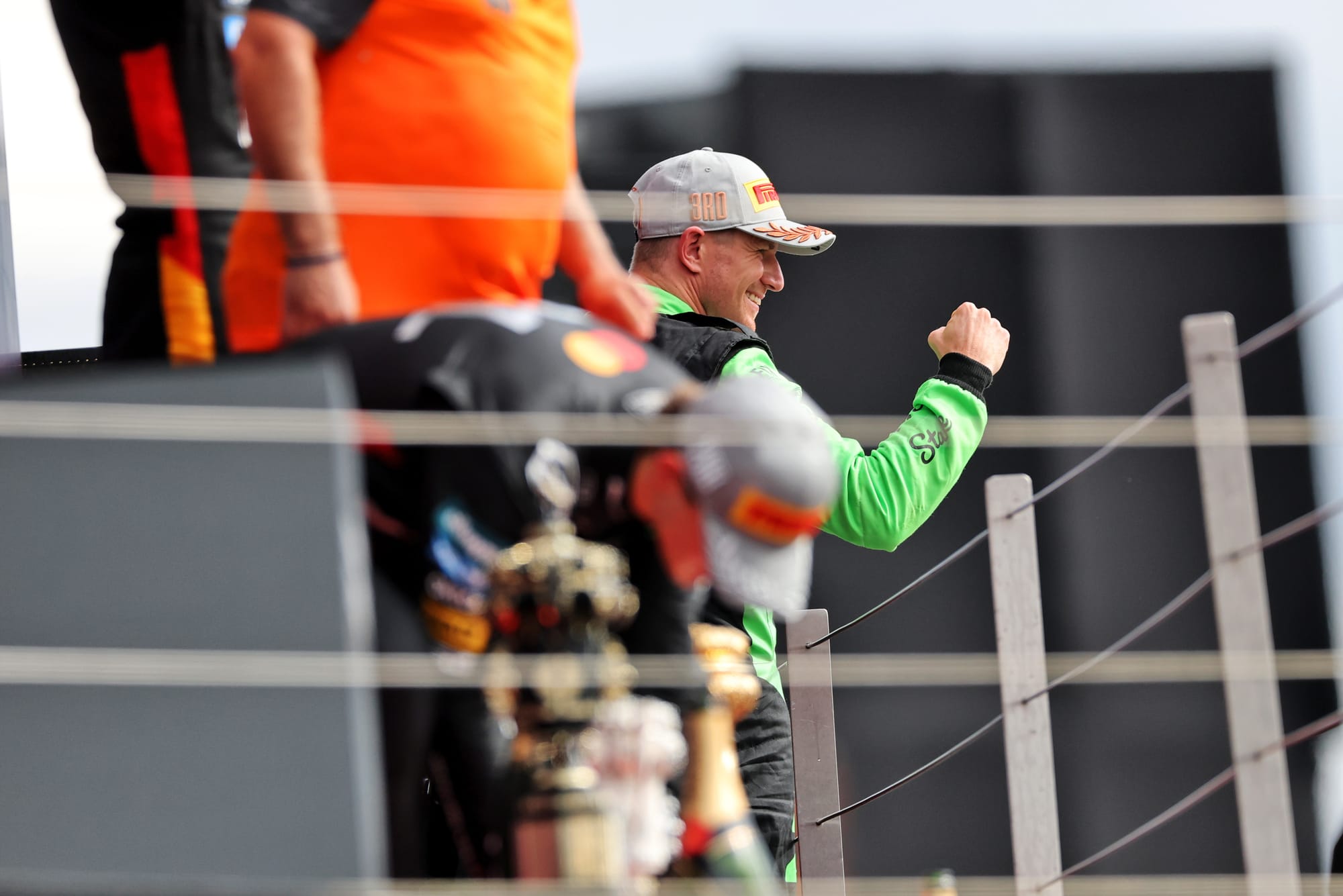
There’s only one statistic that’s ever been associated with Nico Hulkenberg: the record for the most starts without a podium finish.
Now, at the 239th time of asking, F1’s delivered Hulkenberg with the result his talent deserves and shed that unwanted, unjust record - a “monkey off his back” in the words of Sauber team boss Jonathan Wheatley.
Yes, Hulkenberg has had chances before. Think Brazil 2012 when he was dicing with the McLarens for the lead before he clobbered Lewis Hamilton or Germany 2019 when he crashed out of an unlikely podium for Renault.
But those blown chances have been few and far between. Far more commonly, Hulkenberg has been a dependable midfield operator, and in these ground effect era cars, he seems more potent than ever before.
A much slicker Sauber team under Wheatley got his pit calls spot on, pitting him for fresh inters earlier than others and then to slicks later than others.
But this was a result made possible by Hulkenberg, who kept Hamilton’s Ferrari at bay with the kind of drive that makes it baffling to think he’s gone 16 years without an F1 podium.
Weather doomed Red Bull's choice
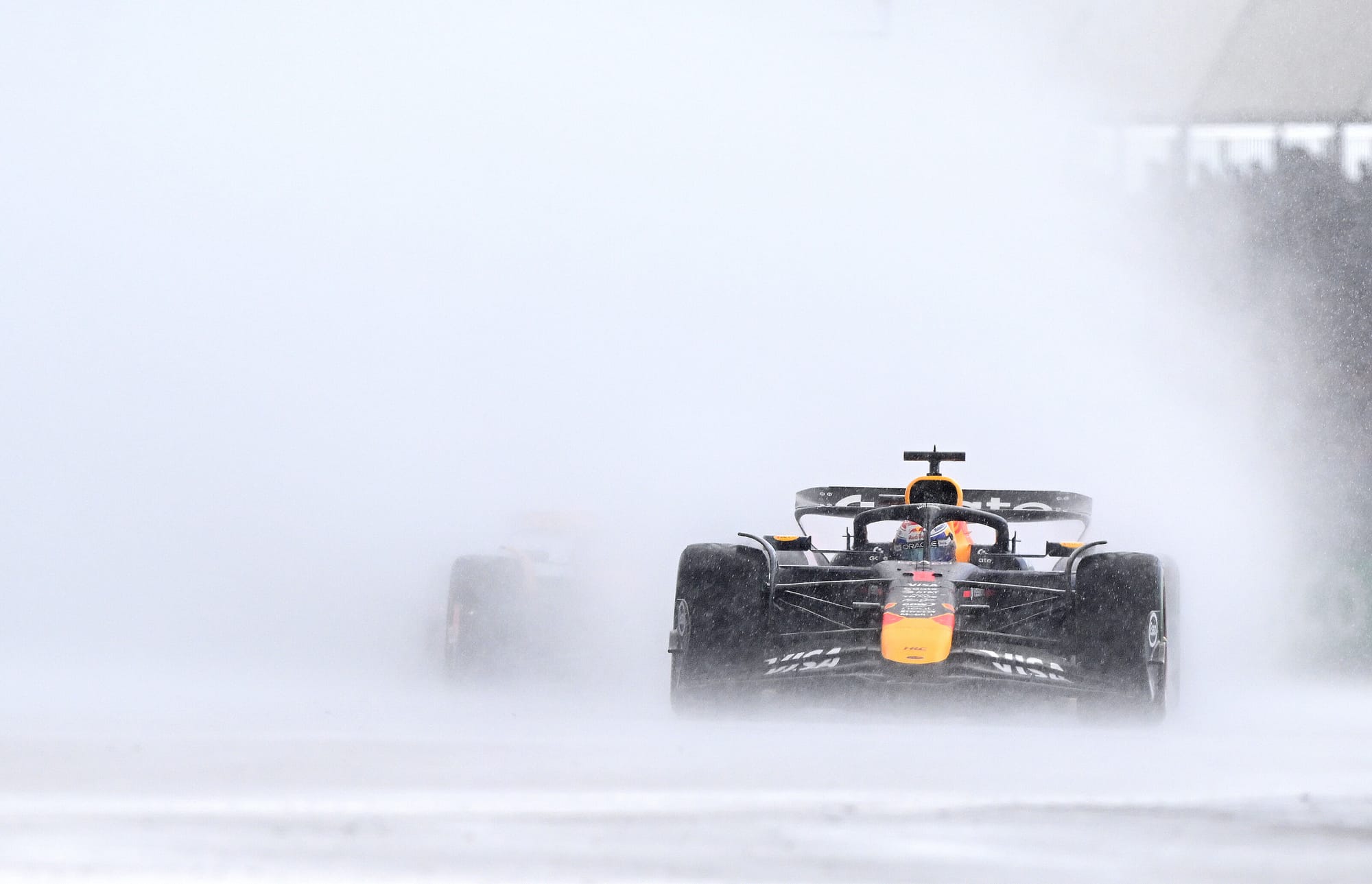
Rain maestro Verstappen was rendered powerless to stop the McLarens at Silverstone, better resembling a rally driver than one of F1’s finest wet weather drivers.
The constant sliding moments and off-track excursions like the Stowe spin weren’t because Verstappen suddenly forgot how to drive in these conditions.
Instead, it was down to Red Bull’s big low-downforce set-up gamble backfiring.
Verstappen had gone down that route after a miserable Friday in which he was swinging from “understeering to the moon” in some corners to oversteering in others.
It gave him a mighty straightline speed advantage that gave him hope of converting a superbly earned pole position into victory on Sunday.
But the rain rendered that advantage obsolete, with Verstappen lacking the downforce needed for the low-grip conditions.
Red Bull was caught out by a weather forecast on Saturday that predicted a 20% chance of rain on Sunday morning, then dry conditions for the race.
McLaren’s strong pace when the track dried out suggests it would have been tricky for Verstappen to beat them, but he’d have surely been third at worst had the race taken place just a couple of hours later.
Ferrari has a mystery problem
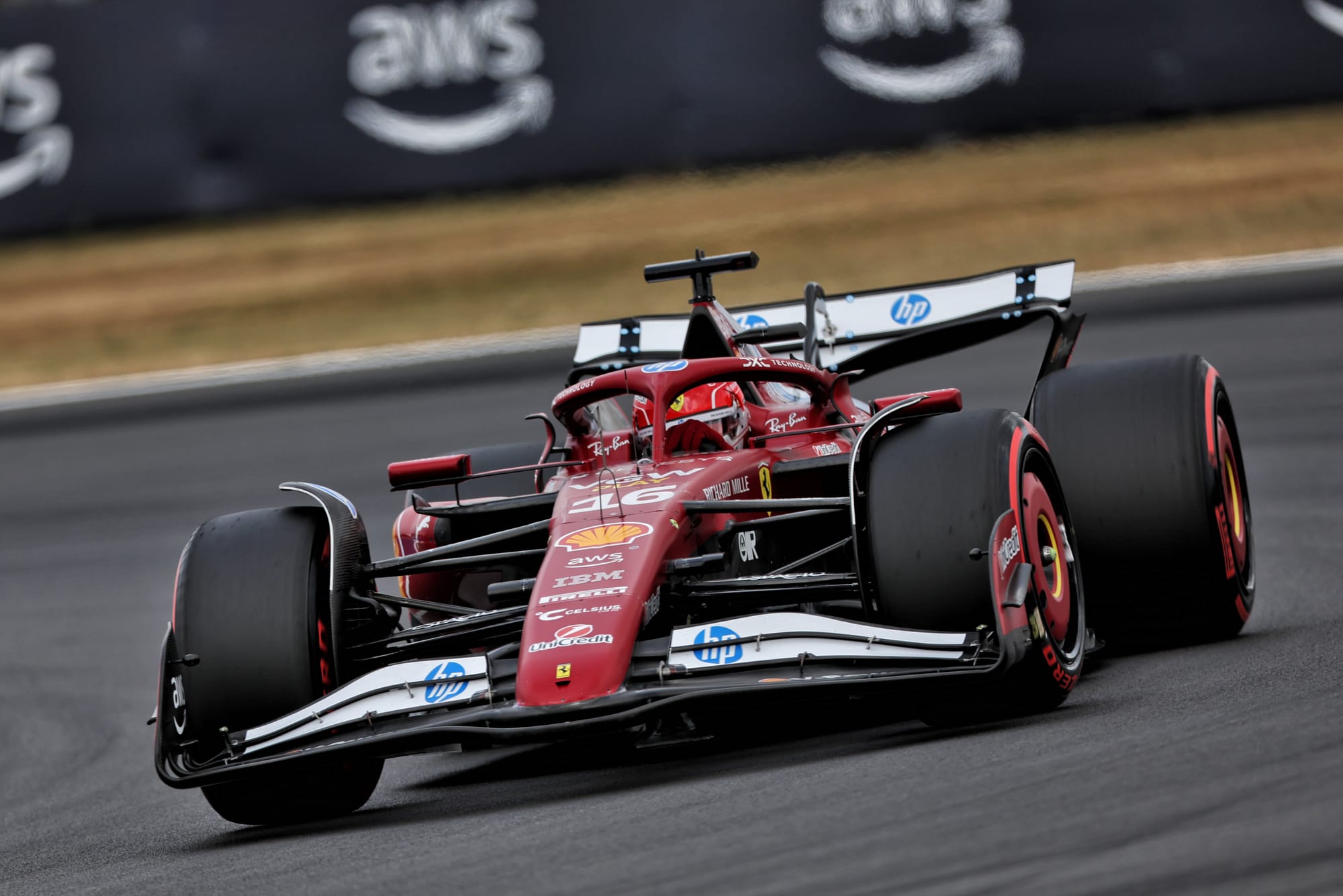
Ferrari’s challenge disappointingly faded through the course of the weekend, and one of the reasons for that was a mystery problem that Charles Leclerc revealed has been plaguing Ferrari at times in qualifying this season.
He didn't want to elaborate, believing what he did say was already too much. Team boss Fred Vasseur referenced that post-race but he wouldn't elaborate on it either.
So what do we know? Well, it's not something to do with the balance of the car. It's not something to do with the car's mechanical platform. So there's not something odd happening as the car itself changes through the session.
And if there’s not an aero problem that emerges, or a vehicle dynamics thing at play, that indicates it might be something engine-related.
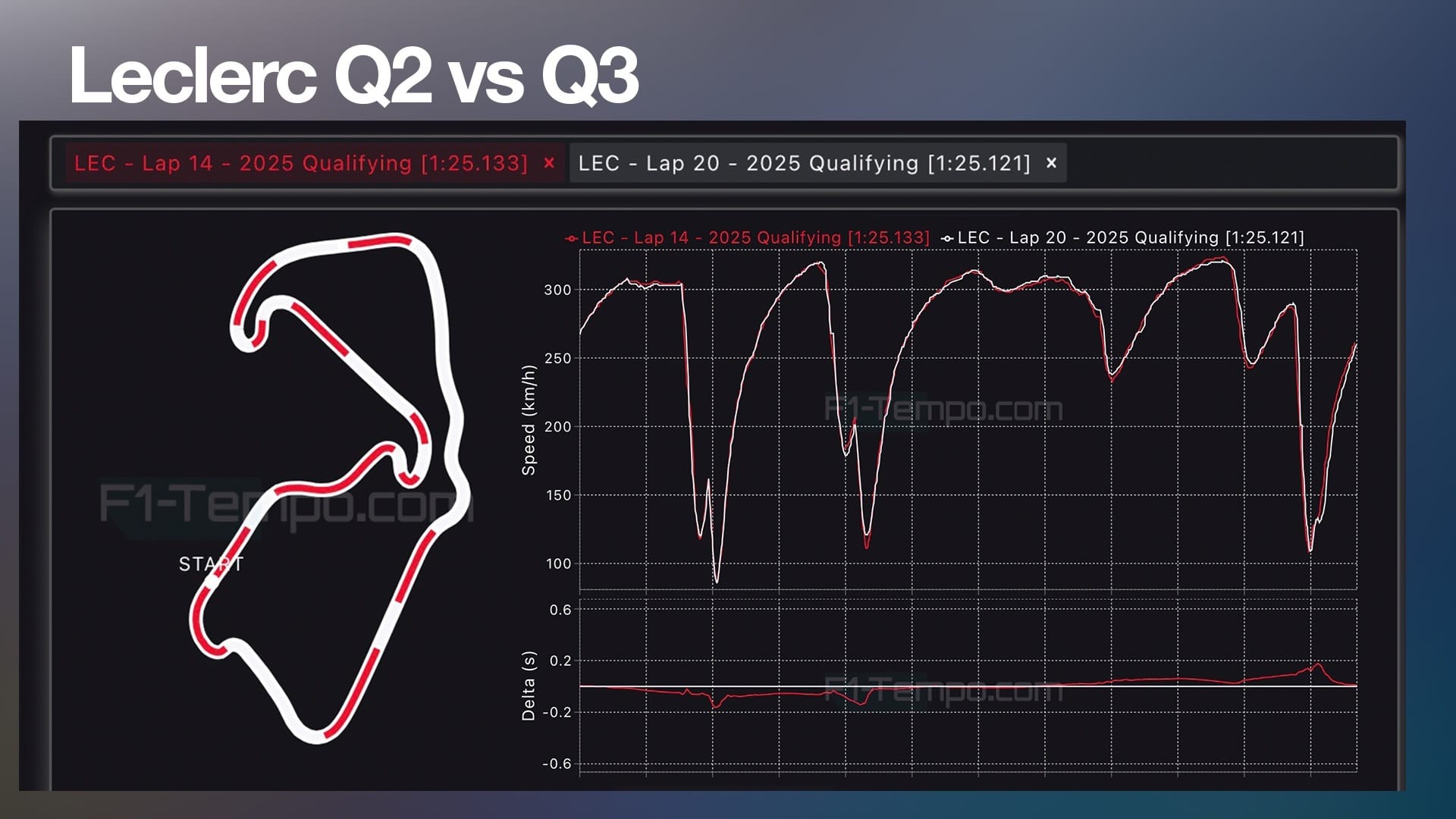
The comparison of Leclerc’s best laps from Q2 to Q3 highlighted he was slower in the opening complex and at the end of straights, which could be a consequence of compromised energy management and deployment when the engines has to do repeated fast laps in a short duration.
That would also fit with why it doesn’t happen everywhere, but did at Silverstone, which puts a high-demand on the hybrid system because it has a lot of high speed sections and few heavy braking zones to help with recharging.
At the moment it’s a mystery, and in keeping this secret to try to avoid a fuss, Ferrari is inevitably making it a bigger thing than it probably should be!
Vasseur even said that there are other variables that have a bigger impact, for example, the way that the weather fluctuated over the course of Saturday.
Whatever the exact causes, the in-weekend regression was disappointing. Ferrari wasn't quite as quick when it needed to be in Q3 after a strong practice and a 1-2 result in Q2, and in the race its set-up and wing choices really cost it.
The car was a handful and Leclerc had an awful grand prix, one of his worst for a long time.
Hamilton made a much better go of it, but fell short of overcoming Hulkenberg’s Sauber despite having a large part of the race to try to pass, partly because the car was particularly bad in dirty air.
The struggle was compounded by switching to slicks at least a lap too early in the final stint, and Hamilton losing more time sliding off on the damp track.
This all meant that for the first time in 12 years, Hamilton failed to finish on the podium at Silverstone.
Colapinto's exhausting Alpine's patience
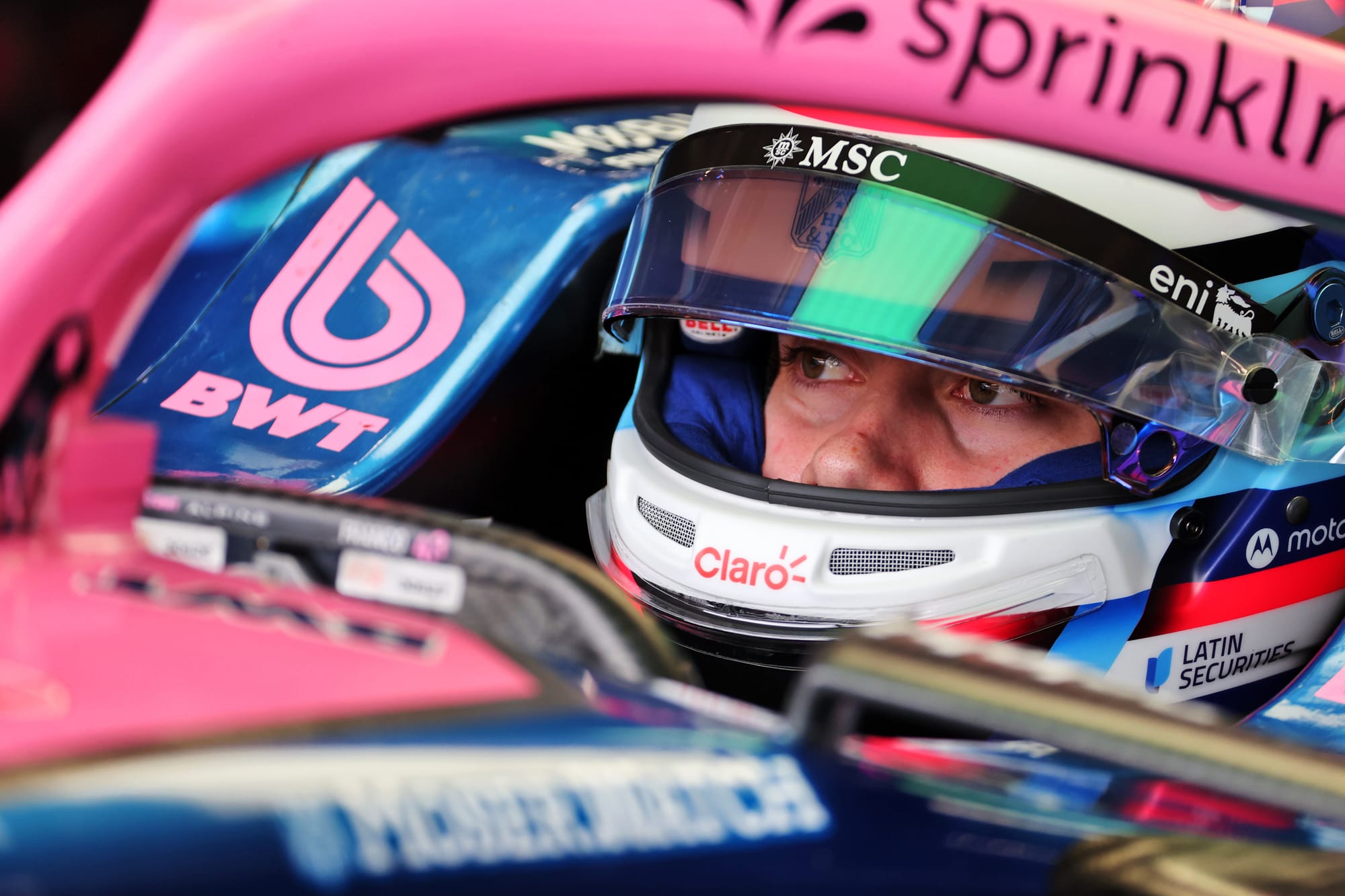
Silverstone was another weekend of contrasting fortunes for the two Alpine drivers.
Pierre Gasly continues to be the grand overachiever in F1, qualifying 10th and finishing sixth at a track Alpine expected to have both cars out in Q1.
But unfortunately his team-mate Franco Colapinto was nowhere. In fact, he didn't take part in this grand prix having lost drive while making a pitstop at the end of the formation lap, gambling on slicks when he was due to start in the pitlane anyway.
That pitlane start was necessitated by Colapinto screwing up qualifying with an avoidable spin and crash in Q1 that caused damage and ended his session early. Alpine went for a pitlane start having changed all of his engine components.
The problem of trying to rejoin from the pitstop might also have been self-inflicted. It looked very similar to what happened in Spain, where Colapinto broke something by not engaging the clutch in time (although on this occasion might have been when he tried to pull away in second gear).
Alpine’s been careful not to leave Colapinto exposed.
Exeutie advisor Flavio Briatore said: "It's a pity about Franco's race, which ended before it even started after suffering a driveline issue.”
But the wording of his “driveline” problem is so specific and yet so vague that, combined with what can be seen and heard on his onboard, leads to a fairly firm conclusion that he did something wrong.
If so, it just adds to the nightmare for Colapinto. He was already disappointed that he didn't manage to convert decent pace through practice into beating Gasly in qualifying. And he's really testing Alpine's patience.
The arrival of a new Latin American sponsor pre-weekend presumably helps keep him safe for now, and Colapinto does deserve time given he has been thrown in mid-season to a new car and a difficult situation.
But Colapinto really needs a break, and to stop making life harder for himself.
Team-mate clash isn't main Haas grievance
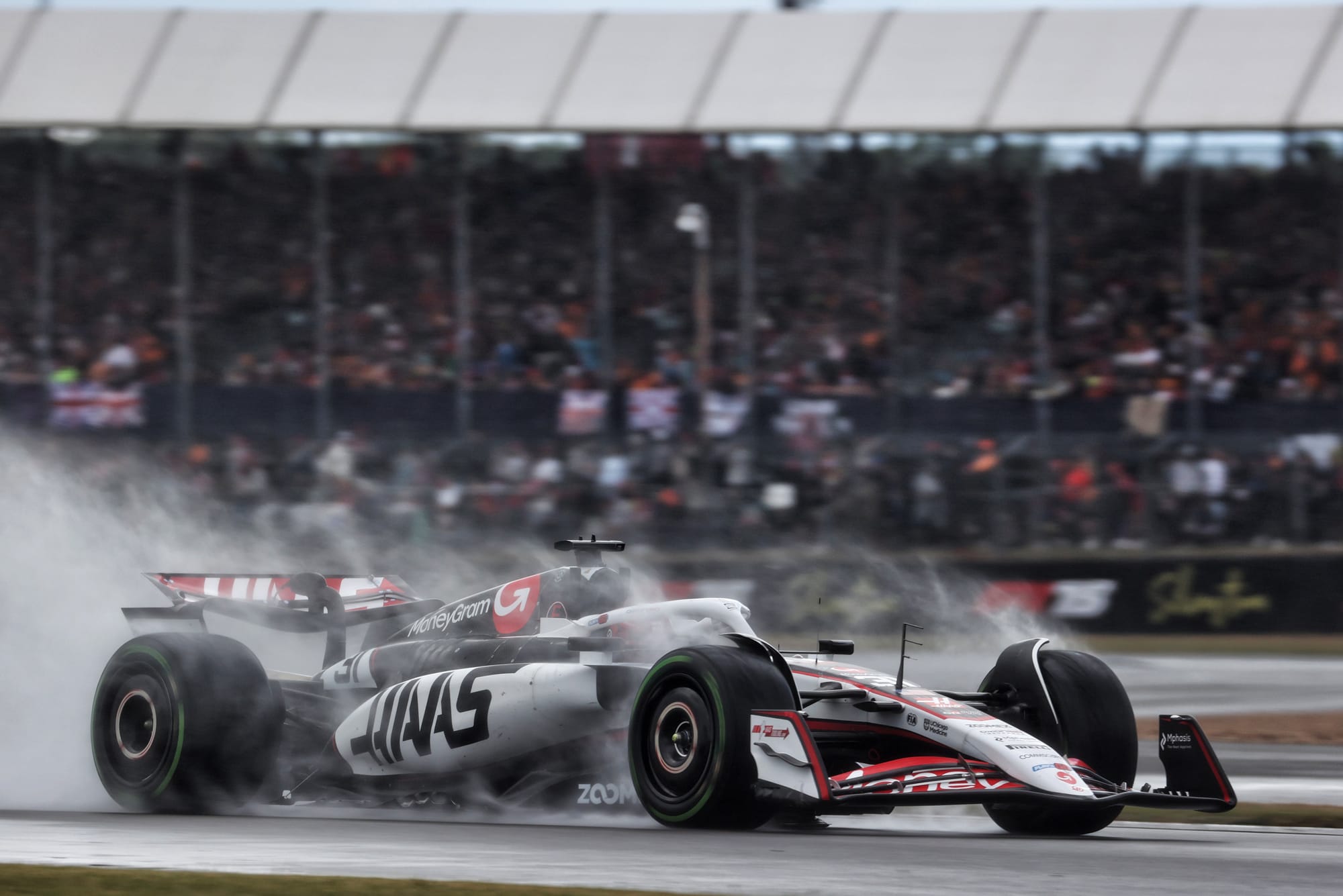
There was immense disappointment at Haas after this race, and only part of that was down to the fact its two cars collided.
The clash between Ollie Bearman and Esteban Ocon was unfortunate and probably avoidable, but it wasn't really the result of one driver being too foolhardy or ignoring team orders - so hardly the most controversial run-in this team’s ever had.
It's something that team boss Ayao Komatsu wasn't pleased to see, obviously, and he hopes it never happens again - but the primary source of his and Haas’s frustration was this was a weekend where it had already wasted a really quick car.
There was a very good upgrade on the Haas at Silverstone and Bearman was very quick in the car on Saturday. But he set himself up for failure by having a silly, unnecessary crash at the pitlane entry under red flag conditions in final practice, which earned him a 10-place grid penalty.
To make matters worse, Haas didn't execute the race very well at all. Bearman was among those to gamble on slicks at the start, which backfired, while Ocon opted to stay out under the first safety car and then dropped like a stone when the race resumed.
It was just a poorly managed race. Don't forget Hulkenberg started one place behind Bearman and finished third. And given that direct rivals scored big, the wasted opportunity stings a lot more than a racing incident in which its drivers came together while not in points contention.
Sainz is fed up
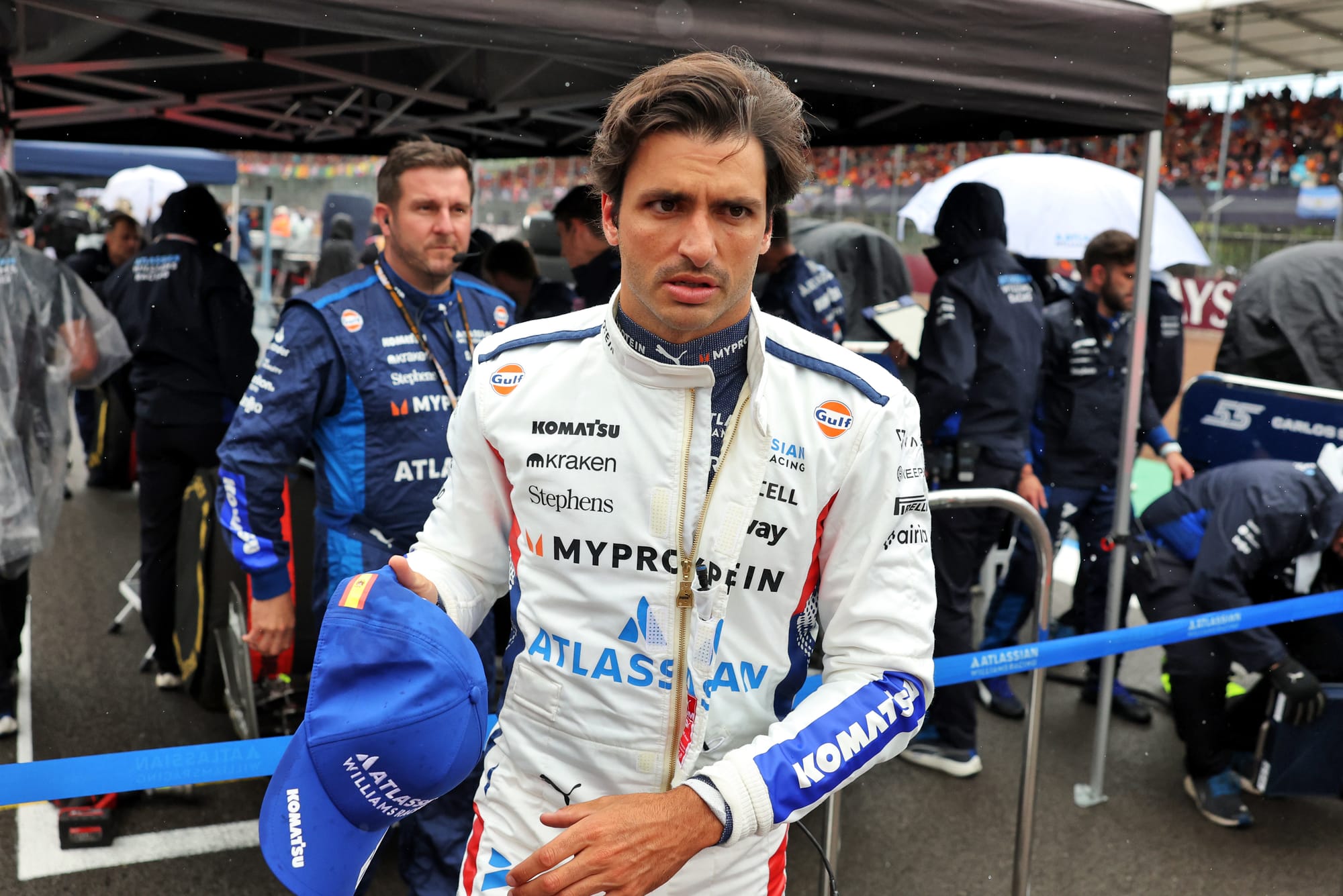
Neither Williams driver has had a particularly happy run of late, and its hopes of producing the kind of British GP heroics some of its midfield rivals enjoyed were stymied by a wing choice based on expecting a dry race.
And for Carlos Sainz a worrying theme is developing. Although he outqualified Alex Albon for the first time in five races at Silverstone, this owed a bit more to Albon underachieving and being annoyed by how Williams managed his Q2.
Sainz has been the slower driver for Williams this season - not by much, but slower. Unfortunately the worst thing about Silverstone is it underlined what Sainz called “the story of my season”, with another unusual reason why he was unable to score a better result.
In Spain it was a lack of pace and front wing damage, in Canada it was a Q1 exit caused by extreme impeding in qualifying, in Austria he did not even start because of a brake problem and fire, and this time it was because Leclerc spun into him!
Finishing 12th, instead of in the points, felt like a retirement to Sainz. It’s just not coming together for him at the moment, and the proof is in the results: he’s scored just 13 points to Albon’s 46.
Clearly not all of that is down to him, as his bizarre Silverstone setback proved, but it’s adding up to Sainz looking and sounding similarly downtrodden most weekends at the moment.
"I’m a bit fed up with this situation where always something happens to us that is out of our control," Sainz admitted on Sunday.
A new Alonso annoyance has emerged
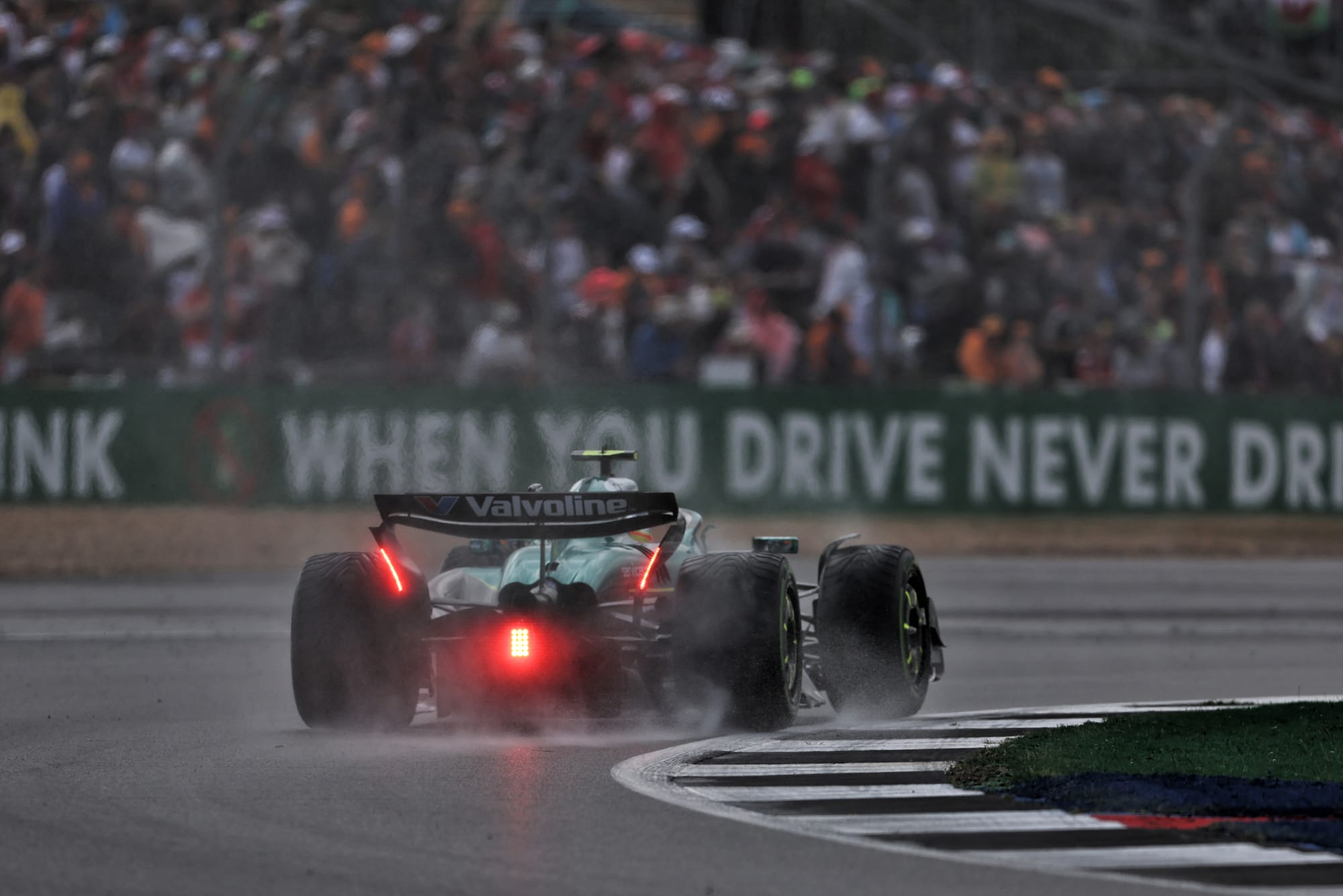
“Crazy how you never get it right with me”.
That was the latest exasperated declaration from Fernando Alonso as he questioned his team’s strategy at Silverstone.
He wanted an early stop for slick tyres that team-mate Lance Stroll enjoyed to gain track position - something, unlike Stroll, Alonso reckoned he could have hung on to.
Moreover, Alonso was irked that he stopped too early for used mediums later in the race as he “lost like 25 seconds” in race time compared to those who stayed out.
It’s not a new phenomenon; Alonso has always made it clear when he’s annoyed by something, and he feels he’s earned that given his status.
This was just a new chapter in his book of grievances.
Team principal Andy Cowell safeguarded his strategy team in typical (and necessary) fashion as he said it’s easy enough to criticise a strategy with “hindsight t-shirts on”.
He said considering how much Stroll had to gain and Alonso had to lose - the calls made sense, and it’s hard to disagree.
But it was all just a bit too cautious for someone of Alonso’s wit.
Mercedes made a 'catastrophic' decision
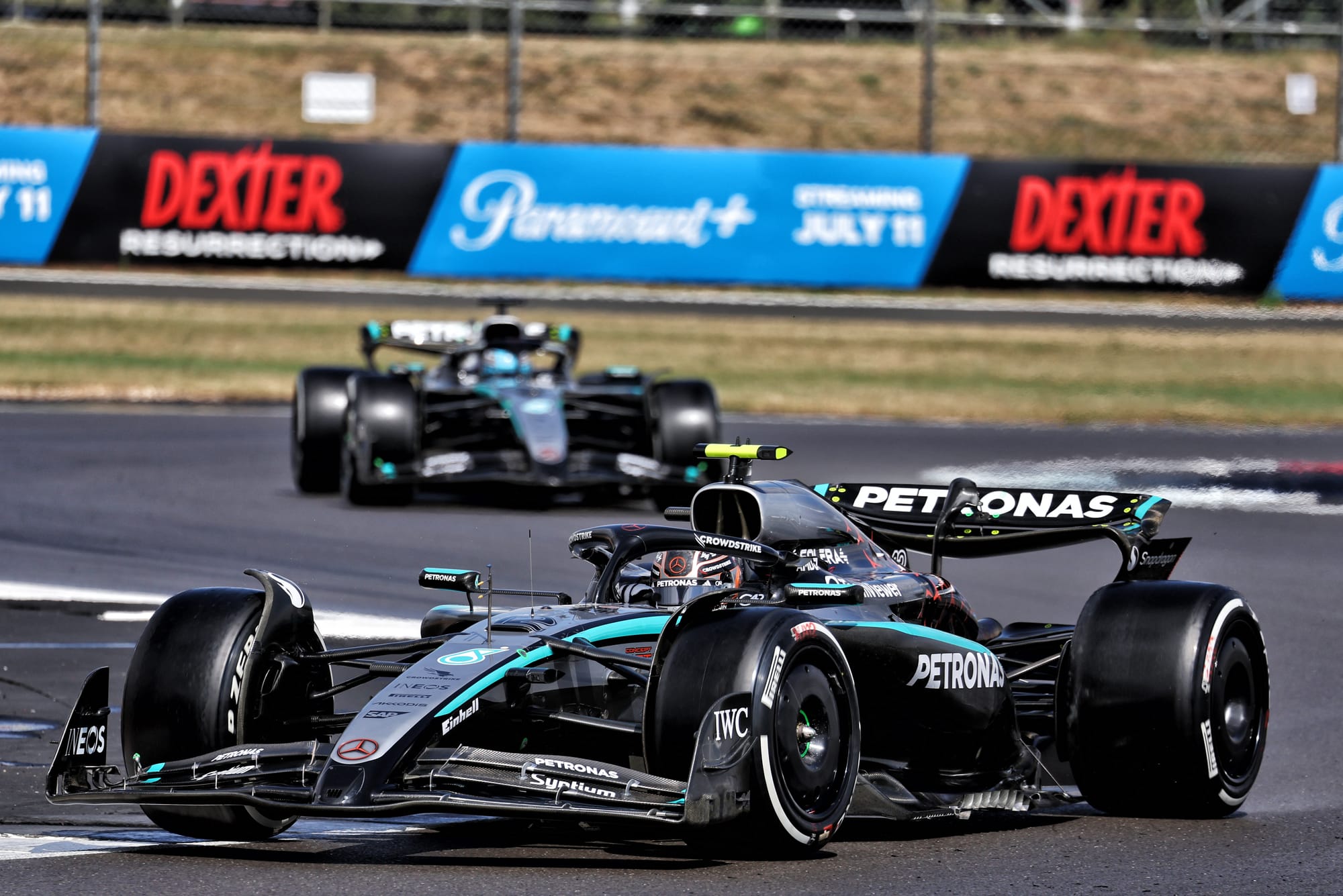
Two cars starting on hard tyres on a wet track and two drivers left lamenting their respective Sundays. This wasn’t a fun day for Mercedes.
Kimi Antonelli was rear-ended by Isack Hadjar, which led to a loss of 40 points of downforce from his broken diffuser - while George Russell was just a passenger on the way to the final point.
Team boss Toto Wolff said the call to start on hards was a “terribly wrong, catastrophic” decision that was partly the pitwall’s fault and partly the drivers’ fault.
Wolff added that driver-to-pitwall communication was “very bad” too. It led to a “robust chat”.
Russell said the decision to start on hards wasn’t that bad but was foiled by a virtual safety car - it was simply a gamble that didn’t pay off.
Antonelli on the other hand was more downbeat: He said: “It seems like everything is going wrong at the moment and it's hard to find some positives.”
It’s going to be a painful two and a half week break until Spa for Mercedes…


